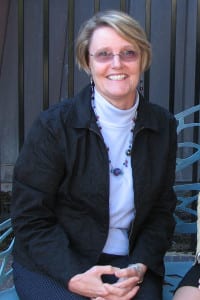Soon Middle Country dogs and their owners won’t have to travel far for puppy play dates or a walk in the park, as plans for a local dog park are moving forward.
The park, which will be located on a property off Boyle Road, just north of Independence Plaza in Selden and across from Washington Heights Street, could be completed by the end of this year, according to Councilwoman Kathy Walsh (I-Centereach).
Irene Rabinowitz, a Selden resident and the former owner of Barks-n-Bubbles Boutique on Middle Country Road in Centereach, has been a driving force behind the project. In 2011, Rabinowitz created Central Suffolk Paws, a local affiliate of Long Island Dog Owners Group, a nonprofit organization dedicated to increasing access to parkland for dogs and their owners.
“You go into this wooded property right off of Boyle Road [and] it’s just so relaxing and peaceful,” Rabinowitz said in a phone interview about the planned site for the dog park.
Walsh said in a phone interview there is money available in this year’s town budget to create a small gravel parking lot and to install fencing for the park, but she was unsure of the project’s total cost. The park will take up about four acres on the northern side of the 10-acre wooded property. Paths that already exist throughout that section will remain for dogs and their owners to roam freely.
Rabinowitz, who owns four dogs including an 11-year-old Australian shepherd named Sydney who needs to stay active, said she has always wondered why there were no dog parks in the central Suffolk area. Last October, Rabinowitz and Sydney completed a 70-mile walk from Centereach to Montauk to raise money and awareness for Central Suffolk Paws and the Arthritis Foundation, Long Island Chapter.
“It is a matter of socialization,” Rabinowitz said about the need for dog parks. “[Sydney] wants to be out there with other dogs and people.”
Brookhaven Town has a few parks for dogs already, including the town’s Middle Island Dog Park, one in Mud Creek County Park in Patchogue and another at the county’s Robinson Duck Farm in Brookhaven hamlet. There are also other dog parks throughout Suffolk County, including the Blydenburgh Dog Park in Hauppauge and East Northport Dog Park in East Northport.
All of these are 20 to 30 minutes away from this community so that’s why we need one here,” said Kevin McCormack, the former executive director of the Middle Country Coalition for Smart Growth, a nonprofit organization working to develop and revitalize the Middle Country community.
McCormack said the idea to create a dog park in Middle Country goes back to when the group was putting together the Middle Country Sustainable Community Plan. In the 2008 community plan, which listed the community’s assets and needs, a dog park was listed as an item the community expressed “significant interest” in.
For the last three months, McCormack said residents involved with the initiative have really tried to move forward with it. A car-wash fundraiser was held recently, and Rabinowitz said she wants to continue to raise funds and hold monthly car washes over the summer. Another fundraiser will be held at the Middle Country Beer Garden in July. Rabinowitz said Central Suffolk Paws is also looking for sponsors for the dog park, with the hope of purchasing things like benches for the park and developing it further.
McCormack said residents could also volunteer to help out, especially on Saturday, May 18, when the Town of Brookhaven will hold its sixth annual Great Brookhaven Clean Up at various locations throughout the town, including the soon-to-be dog park’s location. The property sometimes attracts unwanted visitors, who leave behind alcohol bottles and other trash.
“Volunteers are more than welcome,” McCormack said. “The more we can get [the property] clean, the less we have to rely on the town.”
For updates on the park’s progress or to find out more information, residents can visit the Central Suffolk Paws Facebook group or email [email protected].











